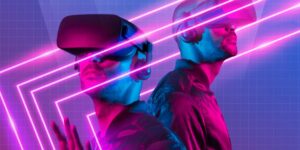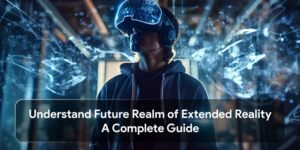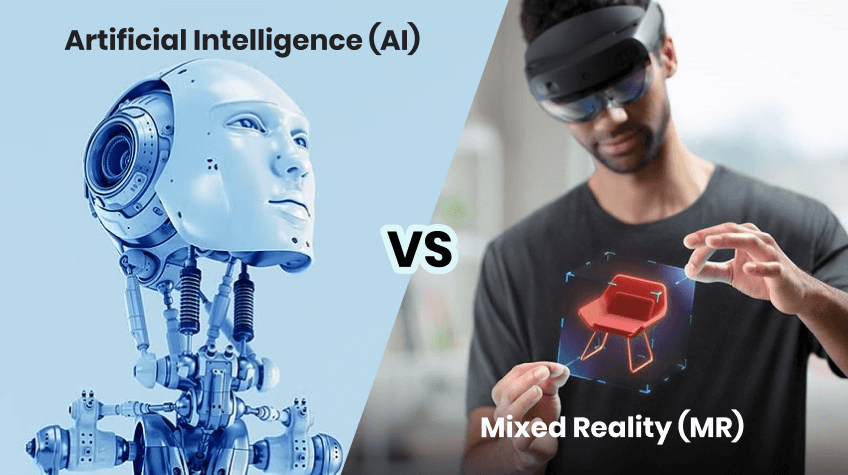
That’s a thought-provoking question because both Artificial intelligence (AI) and mixed Reality (MR) are trending. Both AI and MR are the two most revolutionizing technologies that have greatly impacted all the areas of our lives, including education, health, work, and entertainment.
If you want to know more about the two, then keep exploring this article. In this article, we will delve into the fascinating realm of the two most trending technologies: Artificial Intelligence and Mixed Reality. We will learn that the two can coexist and that combining the capabilities of these two cutting-edge technologies can help entrepreneurs unlock a realm of new and unprecedented experiences in the not-too-distant future.
So, let’s get started…
Artificial Intelligence (AI)
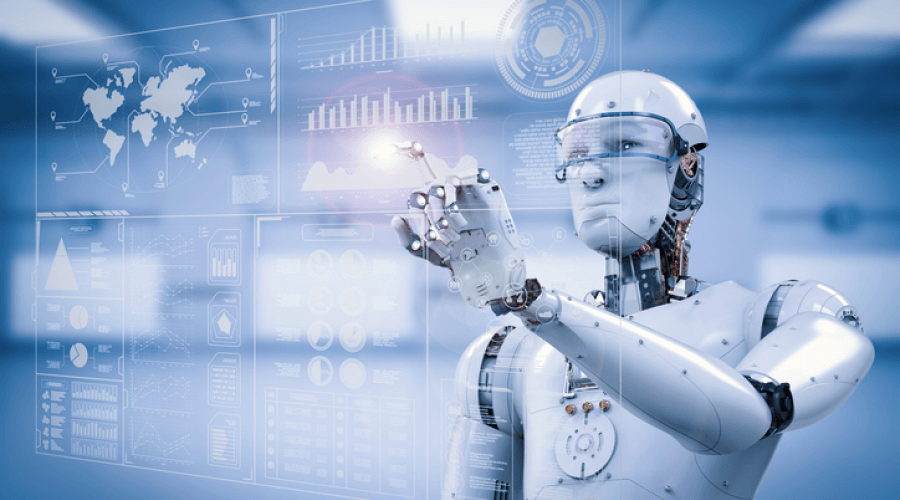
Artificial intelligence refers to the intelligence exhibited by machines or software, distinguishing it from the intelligence displayed by humans. It is a fascinating area of research in computer science that focuses on the development and study of intelligent machines. AI merges large data sets with intuitive processing algorithms to function. AI manipulates these algorithms by simply learning behaviour patterns within the data set.
It encompasses a wide range of systems that demonstrate behaviour similar to that of humans. Machine Learning (ML) is a sub-field of Artificial Intelligence that focuses on the science of identifying patterns in data, making predictions, or creating models using data. Deep Learning, yet another subset of Machine Learning, utilizes artificial neural networks to enhance computer vision, natural language processing (NLP), and machine translation. Machine learning technology is powered by the science of statistics and algorithms, allowing systems to learn from data without the need for explicit programming.
AI possesses a wide range of capabilities that machines have. They can carry out tasks that typically rely on human intelligence. These tasks include identifying images, acquiring knowledge from data, comprehending natural language, and making informed decisions. AI can greatly enhance the world of MR. It offers incredibly realistic simulations, virtual companions that understand and respond to emotions, and dynamic landscapes that change in response to user interactions.
Here is how Artificial Intelligence can help entrepreneurs and individuals:
- AI enables machines to learn from experience, adapt to new inputs, and carry out tasks that resemble human abilities. For example, self-driving cars. AI-powered tools heavily depend on deep learning and natural language processing.
- AI streamlines the process of repetitive learning and discovery by leveraging data.
- AI enhances the capabilities of modern devices, such as the iPhone has Siri, which enhances the user experience. There are a variety of upgrades available for both your home and workplace, including security intelligence systems and smart cameras, as well as investment analysis tools.
- AI utilizes progressive learning algorithms to enable data-driven programming.
- AI utilizes neural networks with multiple hidden layers to analyze vast amounts of data in greater depth.
- AI in healthcare offers personalized medicines and analyzes X-ray readings in numerous renowned hospitals. Personal health care assistants can serve as valuable reminders and motivators, helping you stay on track with taking medication, staying active, and making healthier food choices.
- Artificial Intelligence significantly improves the efficiency, accuracy, and impact of human endeavours. AI techniques can be applied in financial institutions to detect potential fraud in transactions, improve credit scoring accuracy, and automate labour-intensive data management tasks.
Mixed Reality (MR)
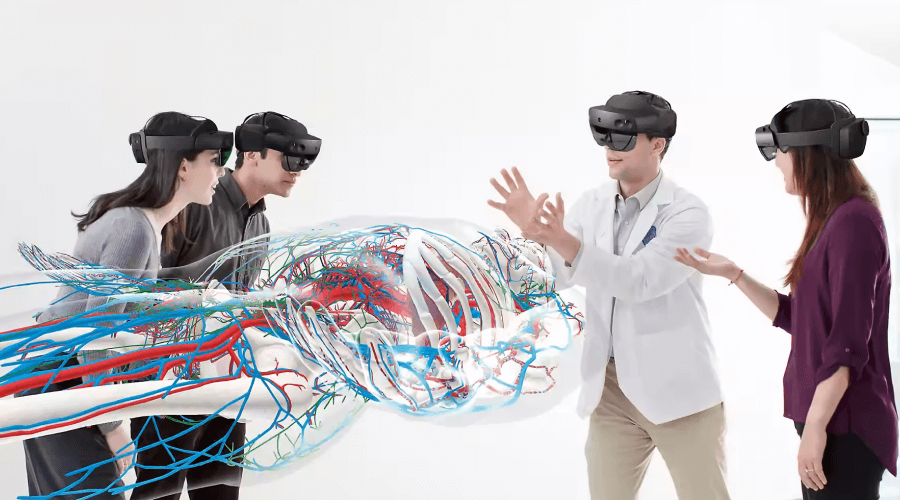
As the name says, Mixed Reality is a combination of a real-world environment and a computer-generated one. In a mixed-reality environment, both physical and virtual objects coexist and interact seamlessly. This technology allows for the seamless integration of both physical and digital realms, resulting in the creation of innovative environments and experiences.
Mixed Reality encompasses a range of experiences that lie between augmented Reality (AR) and virtual Reality (VR). VR provides a fully immersive digital experience completely detached from the real world. On the other hand, AR combines digital objects with the real world, creating a blended experience. Mixed Reality (MR) combines both real and virtual entities to create the illusion of interaction between digital and real-world experiences in real time.
Mixed Reality necessitates the utilization of a headset equipped with a camera to scan the user’s environment. This headset allows you to experience the physical world in a whole new way, with stunning visuals and captivating effects.
Here is how Mixed Reality can help in different aspects of human existence:
- Virtual Reality can enhance real-world experiences by seamlessly integrating digital artefacts. Augmented Reality can completely immerse users in a digital environment that closely mimics the real world.
- MR enhances education by incorporating 3D projections and simulations, making learning more engaging and interactive.
- MR is effective in healthcare as well. It is a significant tool for medical professionals and practitioners. MR makes viewing and sharing patient records and data a breeze.
- It makes communication in different languages very easy. Yes, translation applications in MR technology effectively address the challenges of remote workspace or remote education. It helps users with real-time language translation.
- MR makes video conferencing more impressive and interactive than ever before.
- Mixed Reality has revolutionized the e-learning domain. It offers captivating and engaging learning experiences, enables remote collaboration, facilitates practical learning experiences, and so on. In addition, it helps provide custom-tailored learning to individual needs.
- Mixed Reality helps gamers have an enhanced gaming experience. They can now experience the seamless interaction with digital artifacts in Mixed-reality experiences.
- Simulating the movement of objects or avatars in augmented or virtual experiences is now possible with the help of external data inputs, built-in logic, or machine learning model-based results.
So, these are some of the unique capabilities that can be achieved using MR. Let’s now see which is going to make it big in the future. Here we go…
Artificial Intelligence or Mixed Reality: Which will be the Future?
Well, both AI and MR are crucial. Artificial Intelligence and Mixed Reality are not in competition; instead, they coexist. For any MR-based application to be fully adopted and functional, it should incorporate Artificial Intelligence (AI) to become an Intelligent Mixed Reality Solution. AI and VR/MR can be seamlessly integrated to create a wide range of applications across different domains, including health care, automobiles, and so on. The two technologies do not compete with one another. Instead, they fuel and balance each other.
Both AI and MR can be used together to create captivating and engaging experiences. MR can leverage the power of AI to enhance its digital content, making it more immersive, lifelike, and interactive. This can be achieved through the use of natural language processing, generative models, computer vision, and other advanced AI technologies. These all are at the core of AI.
For instance, Meta (formerly known as Facebook) works on an innovative platform called Horizon Worlds. This platform allows users to create and explore virtual worlds using personalized avatars while also engaging with other users and AI agents. This makes it clear that AI and MR are not in competition with each other; rather, they complement each other. Both technologies can revolutionize computers and how humans engage with machines by developing breathtaking new experiences.
Hopefully, this article has been informative for you and help you make use of both technologies effectively.
Thanks for reading!


